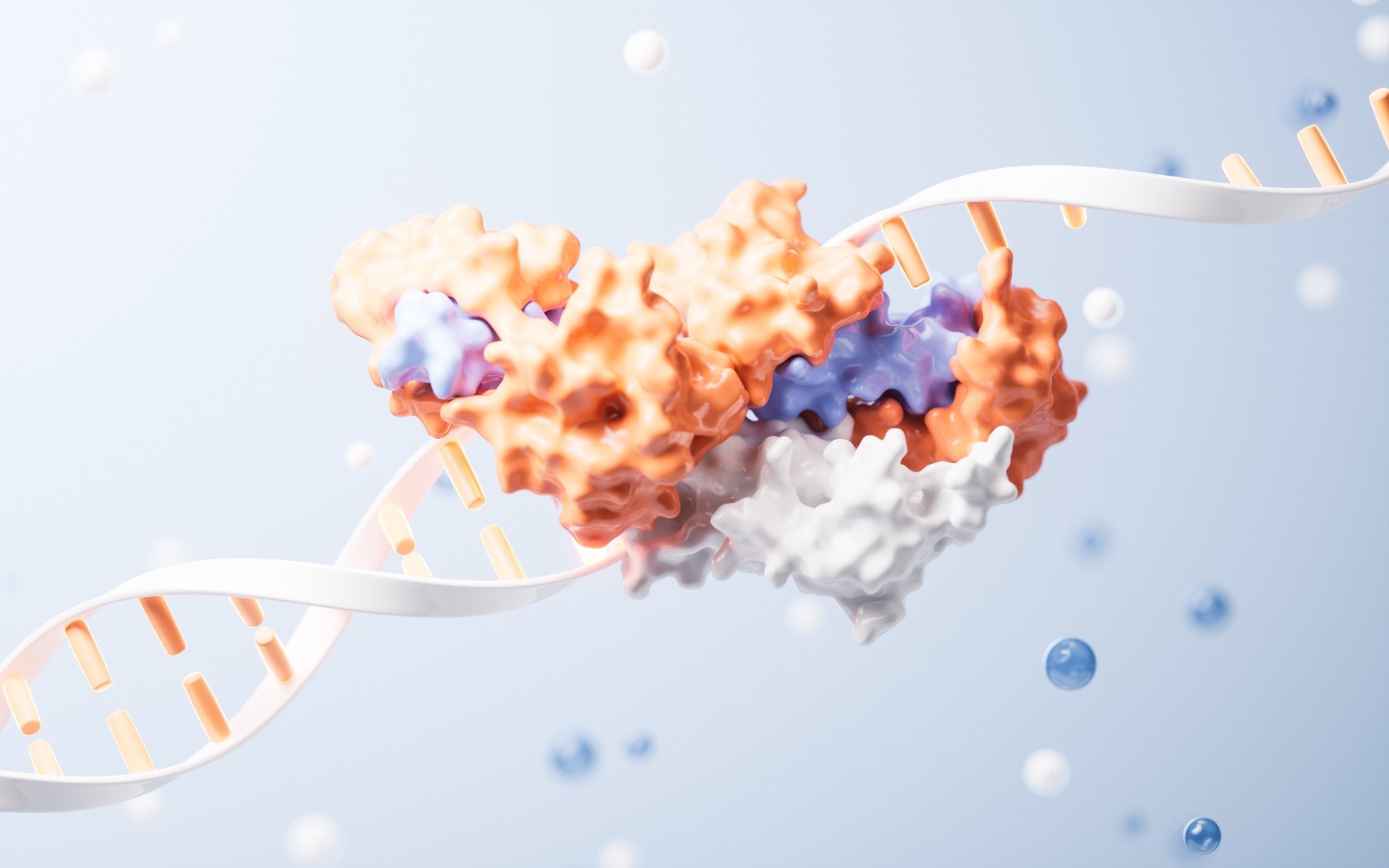Scientists create a breakthrough method to engineer proteins that only interact in the presence of specific drugs, opening new doors for precise and targeted therapies.
 Research: Targeting protein–ligand neosurfaces with a generalizable deep learning tool. Image Credit: Vink Fan / Shutterstock
Research: Targeting protein–ligand neosurfaces with a generalizable deep learning tool. Image Credit: Vink Fan / Shutterstock
Proteins are the foundation of all life. With their virtually limitless diversity, they can perform a wide variety of biological functions, from delivering oxygen to cells and acting as chemical messengers to defending the body against pathogens. Furthermore, most biochemical reactions are only possible thanks to enzymes, a special type of protein catalyst.
The molecular surface of proteins is the key to their function, such as docking small molecules or other proteins or driving chemical reactions. Much like a key fits only one lock and activates it, proteins often interact exclusively with a single molecular structure that precisely matches their surface.
This principle is exploited in drug development: Drug molecules are designed to bind to specific proteins, altering their surface and, consequently, their behavior. The newly created "neo-surface" can, in turn, form novel interactions with other proteins. Molecules designed to bring together different proteins that otherwise would not interact are called "molecular glues," and they are a promising modality for treating diseases by inactivating or degrading the proteins that cause disease.
Newly designed proteins hold potential for therapeutic breakthroughs
A long-term collaboration of Michael Bronstein, scientific director of AITHYRA, the new Institute of the Austrian Academy of Sciences (ÖAW), with the team of Bruno Correia, head of the Laboratory for Immunoengineering and Protein Design at EPFL, has pioneered the use of geometric deep learning architecture called "Molecular Surface Interaction Fingerprinting" (MaSIF) to design new proteins with desired molecular surface properties.
In a new study published in Nature this week, the team applied MaSIF to proteins with bound drug molecules and showed that it can be used to design proteins that bind to these neo-surfaces.
"One of the key challenges of machine learning approaches is their generalization ability, or how well the method works on data never seen before," explains Michael Bronstein.
The researchers demonstrated that the neural network trained on protein-protein interactions generalized effectively to ligand-protein complexes, offering new opportunities for designing protein-ligand interactions.
"The new approach allows us to design switchable protein interactions," Bruno Correia says.
This novel ability to control interactions at the molecular level provides a pathway to enhanced precision in therapies, particularly in the context of oncological immunotherapies.
Experimental validation and computational insights
The researchers experimentally validated their novel protein binders against three drug-bound protein complexes containing the hormone progesterone, the FDA-approved leukemia drug Venetoclax, and the naturally occurring antibiotic Actinonin. The protein binders designed using MaSIF successfully recognized each drug-protein complex with high affinity. The team explains this was possible because MaSIF is based on general surface features that apply to proteins and small molecules. Thus, they were able to map the small-molecule features onto the same descriptor space that MaSIF was trained on for proteins.
The ability to map small-molecule features into this shared space represents a major advancement in designing chemically induced protein interactions, particularly for synthetic biology and drug discovery applications.
"MaSIF has a relatively small number of parameters – around 70,000 versus billions for large deep learning systems like ChatGPT," explains PhD student and co-author Arne Schneuing. "This is possible because we use only key surface features, resulting in a high level of abstraction. In other words, we don't give the system the full picture; only the part we think matters for solving the problem."
Co-first author Anthony Marchand is excited about the prospects of the new approach. "Our idea was to engineer an interaction in which a small molecule causes two proteins to come together. Some approaches have focused on screening for such small molecules, but we wanted to design a novel protein that would bind to a defined protein-drug complex." He believes that "such designed chemically induced protein interactions will have the potential to expand the sensing repertoire and the assembly of new synthetic pathways in engineered cells for innovative drug-controlled cell-based therapies."
Sources:
Journal reference:
- Marchand, A., Buckley, S., Schneuing, A., Pacesa, M., Elia, M., Gainza, P., Elizarova, E., Neeser, R. M., Lee, P., Reymond, L., Miao, Y., Scheller, L., Georgeon, S., Schmidt, J., Schwaller, P., Maerkl, S. J., Bronstein, M., & Correia, B. E. (2025). Targeting protein–ligand neosurfaces with a generalizable deep learning tool. Nature, 1-10. DOI:10.1038/s41586-024-08435-4, https://www.nature.com/articles/s41586-024-08435-4